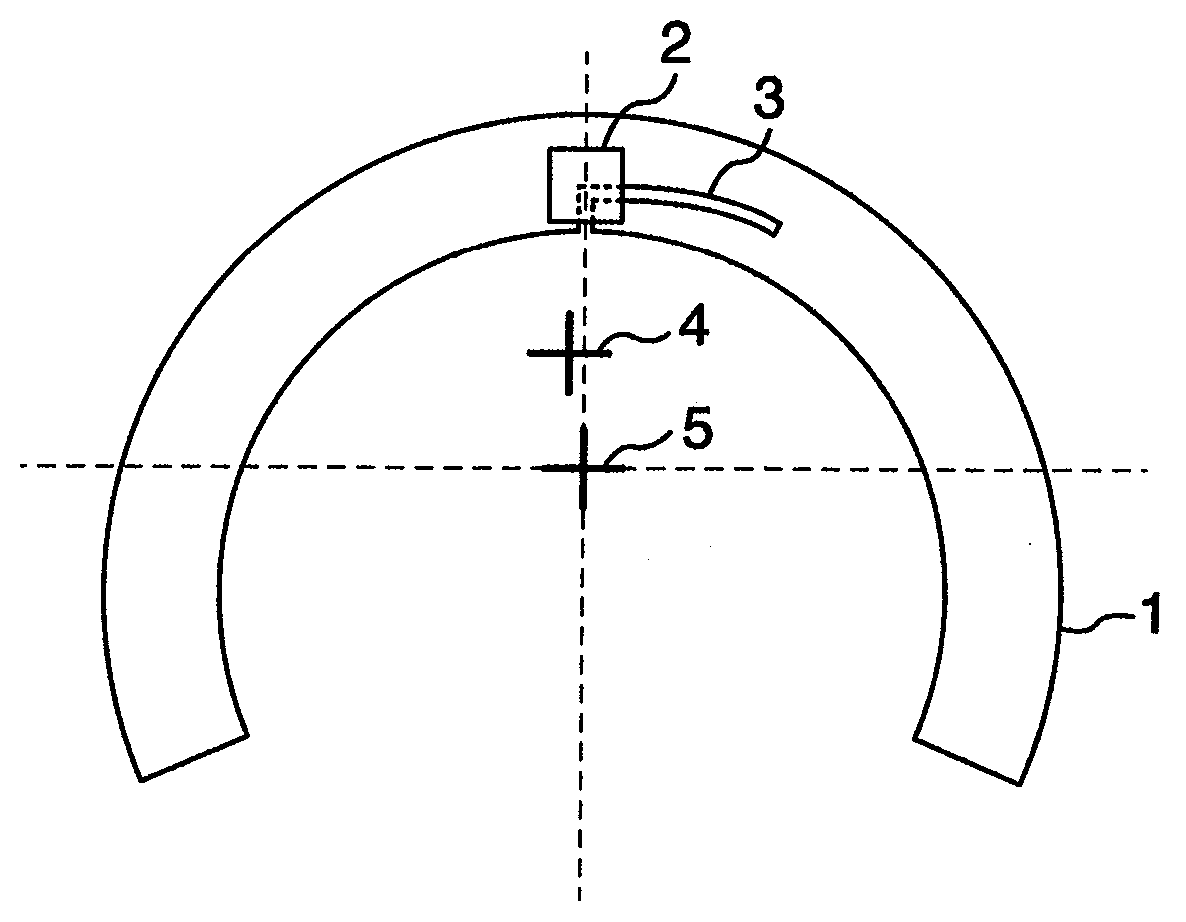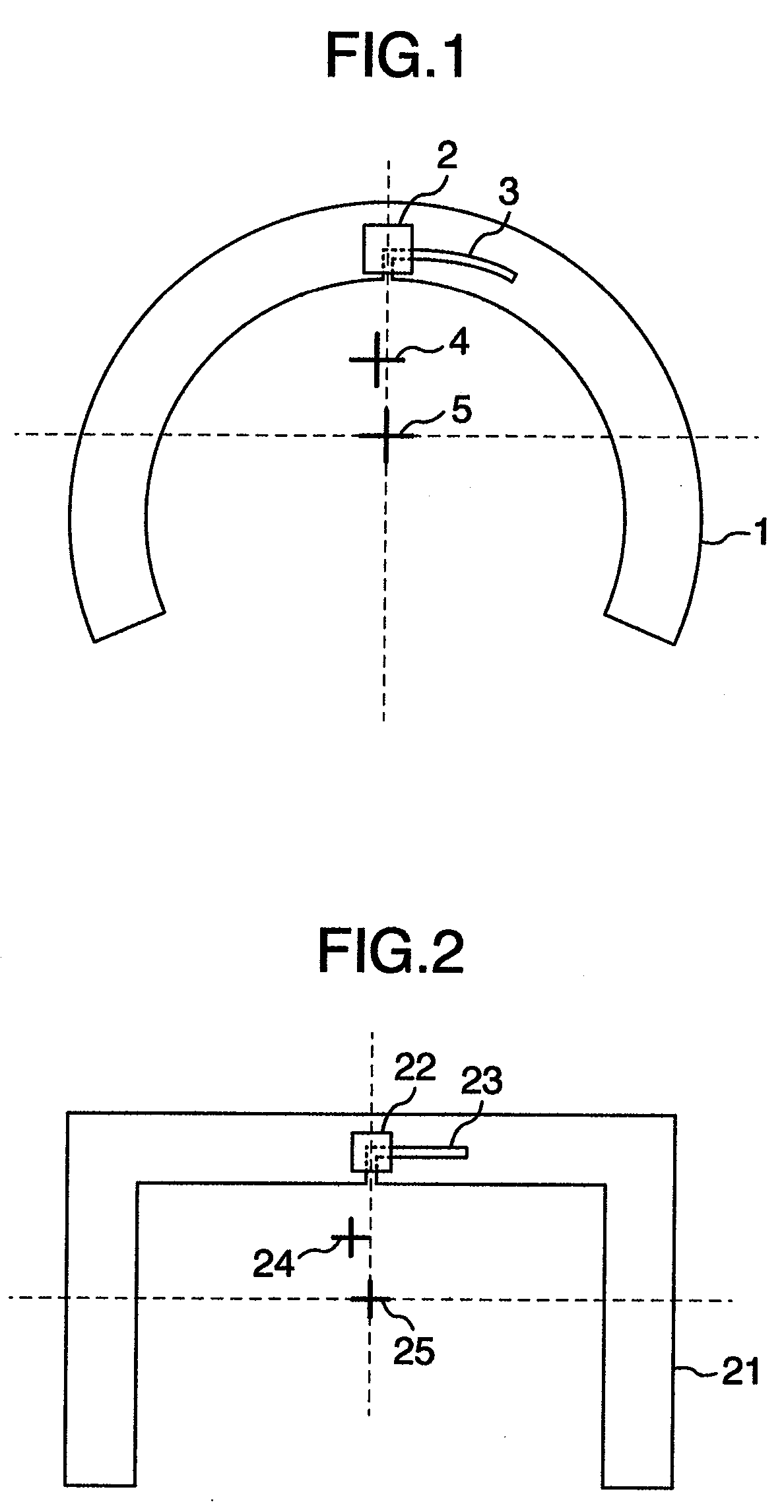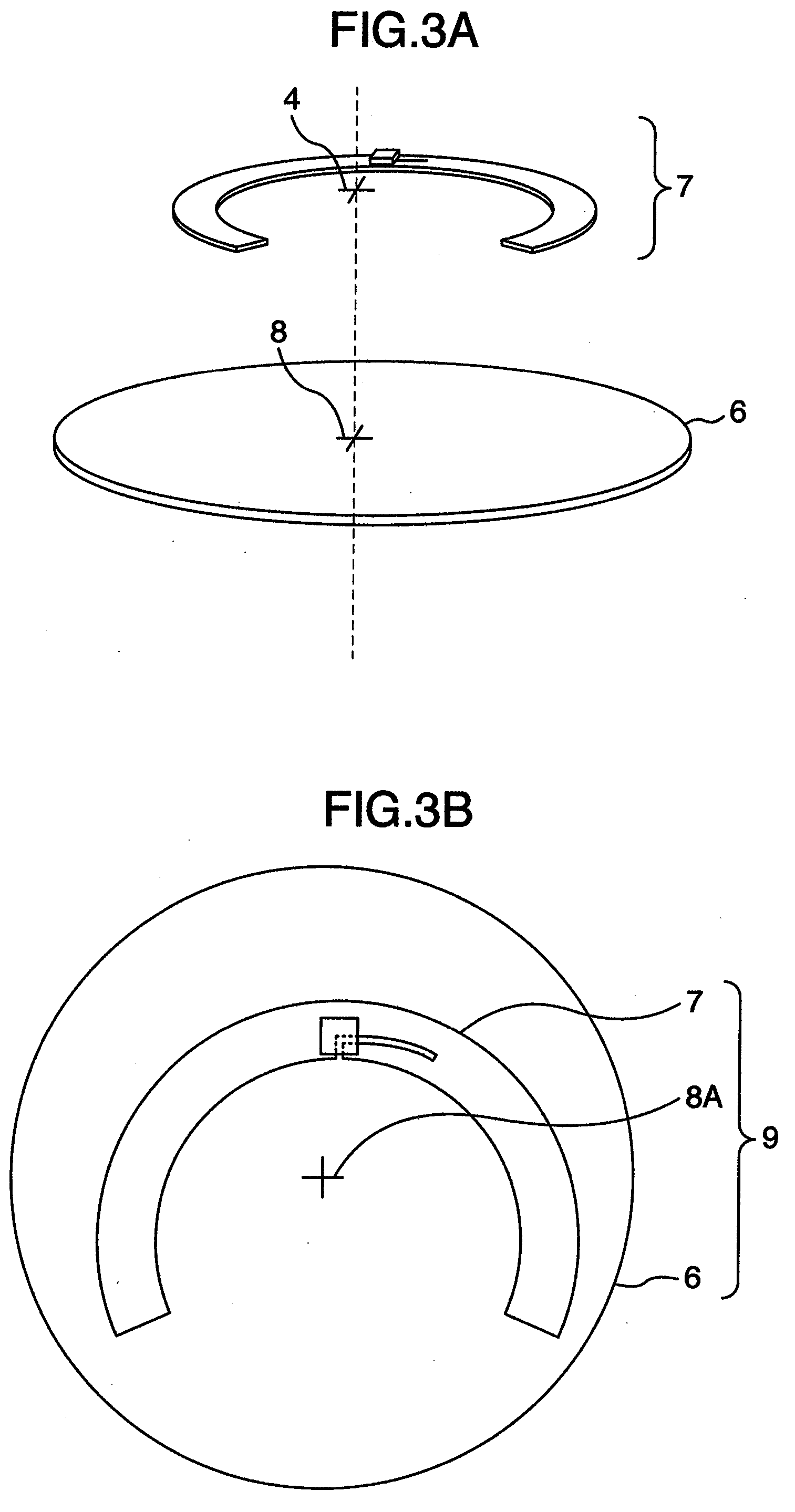Radio frequency identification tag
a radio frequency identification and tag technology, applied in the field of rfid (radio frequency identification) tags, can solve the problems of inability to obtain desired communication distance, difficult to attach the rfid tag to all currently distributed disk media, and difficult to attach the balancer to a data storage area, etc., to achieve stable communication characteristics, reduce the amount of mass eccentricity due to the attachment of the rfid tag, and reduce the effect of mass eccentricity
- Summary
- Abstract
- Description
- Claims
- Application Information
AI Technical Summary
Benefits of technology
Problems solved by technology
Method used
Image
Examples
first embodiment
[0031]First, an RFID according to the first embodiment will be described with reference to FIG. 1. FIG. 1 shows an antenna of the circular RFID tag. On a circular antenna 1, an L-type slit 3 for performing impedance matching between an IC chip having recorded therein information and the antenna 1 is formed. The IC chip 2 having recorded therein information is mounted on this antenna 1. Description will be made later on the connection between the antenna 1 and the IC chip 2. There exists a center 5 being a center of a shape determined from a width and length of the antenna 1. A central axis of the antenna 1 having mounted thereon the IC chip 2 is located at a position shown in a central axis 4. When the antenna 1 is rotated around this central axis, a mass eccentricity can be canceled without using a balancer. The central axis used herein means an axis almost vertically penetrating an antenna surface via a center of gravity.
[0032]For measurement of the central axis, there is used a m...
second embodiment
[0042]The embodiment will be described on the case where the metal conductive layer 14B serving as a light reflecting film is formed up to the clamping area of the disk medium as described above. FIG. 8B shows a method of attaching the RFID tag on the disk medium 12B having a DVD structure and in which the metal conductive layer 14B is formed up to the clamping area. In the structure of FIG. 8B, the metal conductive layer 14B is formed in the clamping area R4 having attached thereon the RFID tag. Accordingly, even if the RFID tag 9A described in the first embodiment is attached on the clamping area R4, the RFID tag cannot sufficiently respond to signals outputted from a reader due to the effect of the metal conductive layer 14B. This phenomenon is the same as that in the case where a general-purpose RFID tag is attached on a metallic article. Therefore, the RFID tag can be operated by a method of inserting a spacer between the metal conductive layer and the RFID tag 9A. However, the...
third embodiment
[0053]The reading speed of the disk medium is increased and the number of rotations of the disk medium is increased and therefore, a reading error may be caused by vibrations due to the turbulence of air flow generated within the disk drive. In the present embodiment, with reference to FIG. 15, description will be made on a structure of the RFID tag for preventing the turbulence of air flow generated within the disk drive. The RFID tag described in the first and the second embodiments has a structure in which the IC chip is formed on the disk medium. However, the RFID tag has a shape in which the IC chip has a thickness of 50 μm and only the IC chip having a protrusion with a height of 50 μm is formed on the antenna. A protective film is formed on the tag antenna; however, the periphery of the IC chip is projected. When the disk medium rotates at high velocity, the turbulence of air flow is generated within the disk drive due to this protrusion and vibrations of the disk medium occu...
PUM
 Login to View More
Login to View More Abstract
Description
Claims
Application Information
 Login to View More
Login to View More - R&D
- Intellectual Property
- Life Sciences
- Materials
- Tech Scout
- Unparalleled Data Quality
- Higher Quality Content
- 60% Fewer Hallucinations
Browse by: Latest US Patents, China's latest patents, Technical Efficacy Thesaurus, Application Domain, Technology Topic, Popular Technical Reports.
© 2025 PatSnap. All rights reserved.Legal|Privacy policy|Modern Slavery Act Transparency Statement|Sitemap|About US| Contact US: help@patsnap.com



